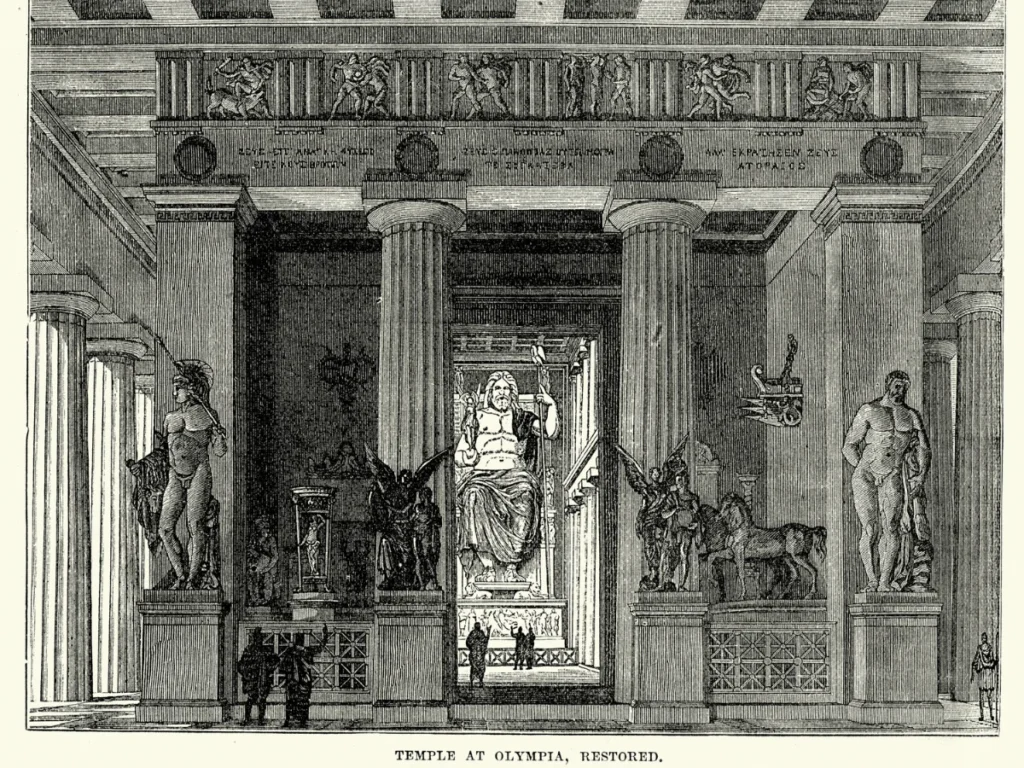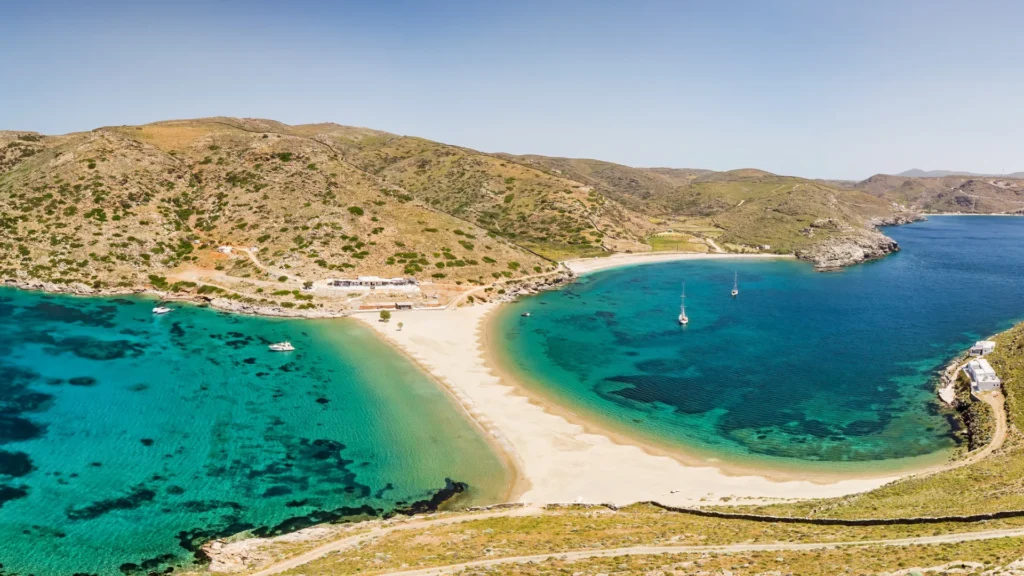The majestic Statue of Zeus at Olympia
The majestic Statue of Zeus at Olympia, sculpted by Phidias, was a divine masterpiece symbolizing the grandeur of ancient Greece. It graced the Temple of Zeus and embodied the powerful connection between the gods and human life. Crafted using chryselephantine techniques, it showcased Greek architectural brilliance. In a society where religion permeated every aspect of existence, this statue held profound significance. It was both a stunning work of art and a spiritual conduit, underscoring the enduring impact of ancient Greek culture.

The majestic Statue of Zeus at Olympia
The Statue of Zeus at Olympia was a marvel of ancient Greek art and engineering, representing the grandeur of the gods in a tangible form. Crafted by the renowned Greek sculptor Phidias, this colossal statue was a symbol of divine power and a tribute to the king of the gods, Zeus.
Purpose and Significance
The statue was commissioned to be the centerpiece of the Temple of Zeus at Olympia, a sanctuary dedicated to the king of the gods. It served both a religious and political purpose. In the religious context, it was meant to honor Zeus and invoke his protection over the ancient Olympic Games, which were held nearby. This event was of paramount importance to the ancient Greeks. Emphasizing their strong belief in the divine and the sacred connection between the gods and human affairs. Politically, it was a testament to the wealth and cultural significance of the city of Olympia and the broader Greek world.
Architectural Mastery
The construction of the statue showcased the Greeks’ remarkable architectural skills. Phidias and his team used a wooden frame and covered it with ivory plates and gold leaf to create the awe-inspiring figure of Zeus. This method, known as chryselephantine, was a testament to their expertise in manipulating materials to create lifelike forms.
The Role of Religion
Ancient Greek society placed immense importance on the gods, intertwining religion into every aspect of life. From daily routines to political affairs. The Statue of Zeus transcended mere art; it embodied divinity, inspiring awe and fostering a link to the sacred. Pilgrims and athletes at the Olympic Games would have sensed a deep spiritual aura enveloping them in its presence.
To wrap up, the Statue of Zeus at Olympia remains a symbol of ancient Greece’s craftsmanship, dedication, and spiritual importance. It wasn’t merely a statue. It bridged the mortal realm with the divine, underscoring the lasting impact of Greek culture on humanity.
More History

The city-state of Megalopolis
Megalopolis, a prominent ancient Greek city-state, emerged as a significant political and cultural center, making its mark in the history of the Peloponnese region.

Judaism had a presence in ancient Greece
Judaism found a place in ancient Greece, where Jewish communities flourished, contributing to the rich tapestry of religious & cultural diversity in the Hellenistic world.

The Roman Empire in Greece
The Roman Empire’s dominance in Greece brought significant cultural amalgamation and architectural achievements, shaping the region’s history during this period. Greece was an important part of Rome.
